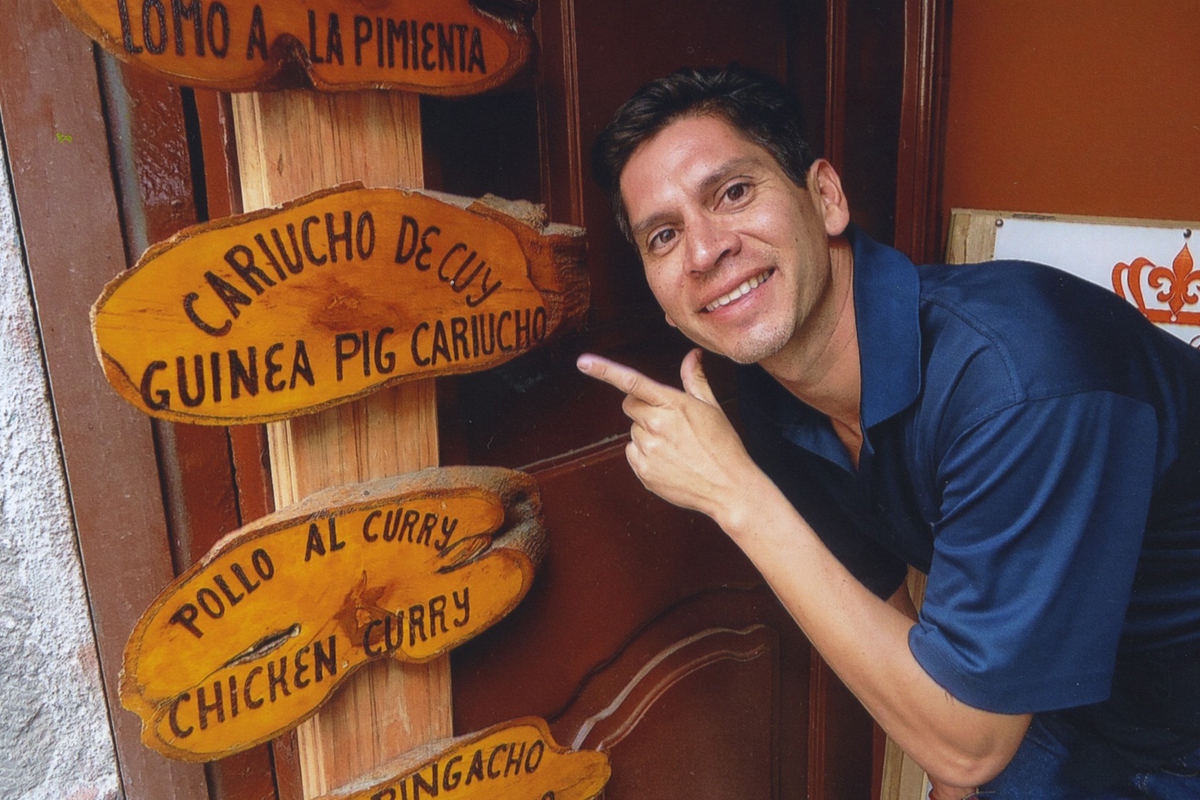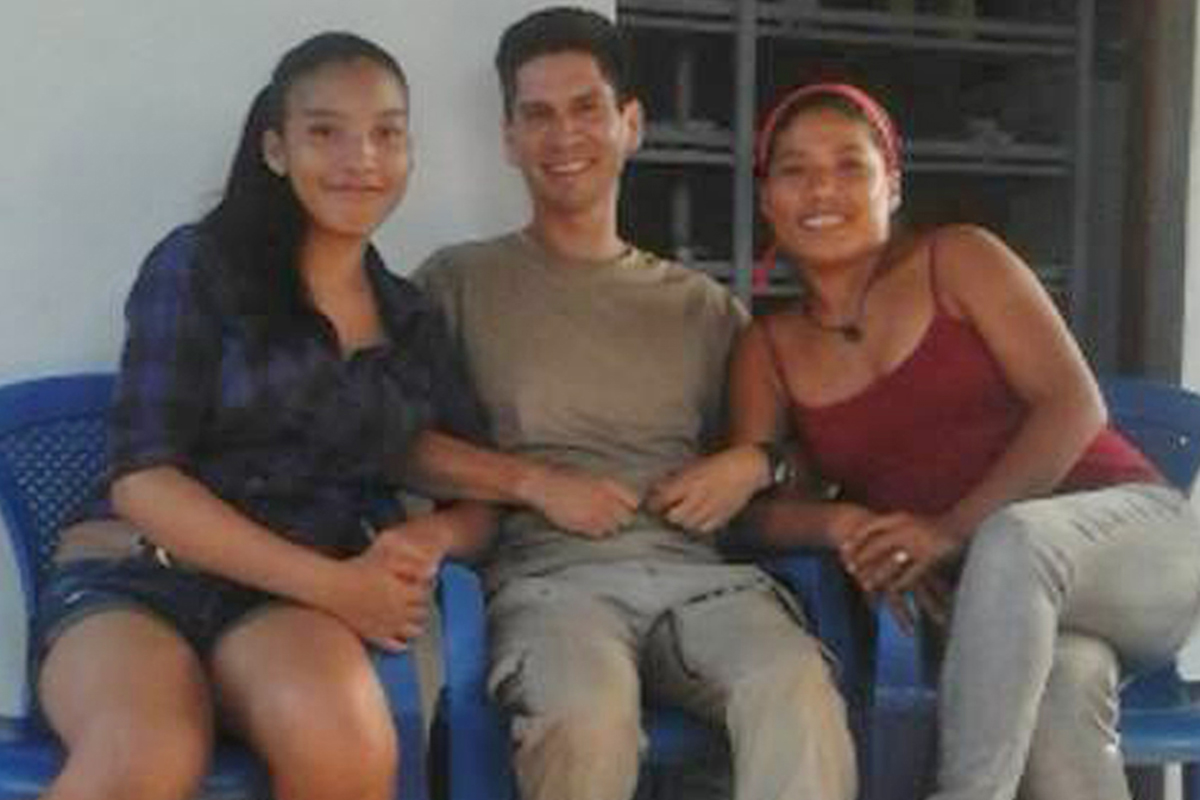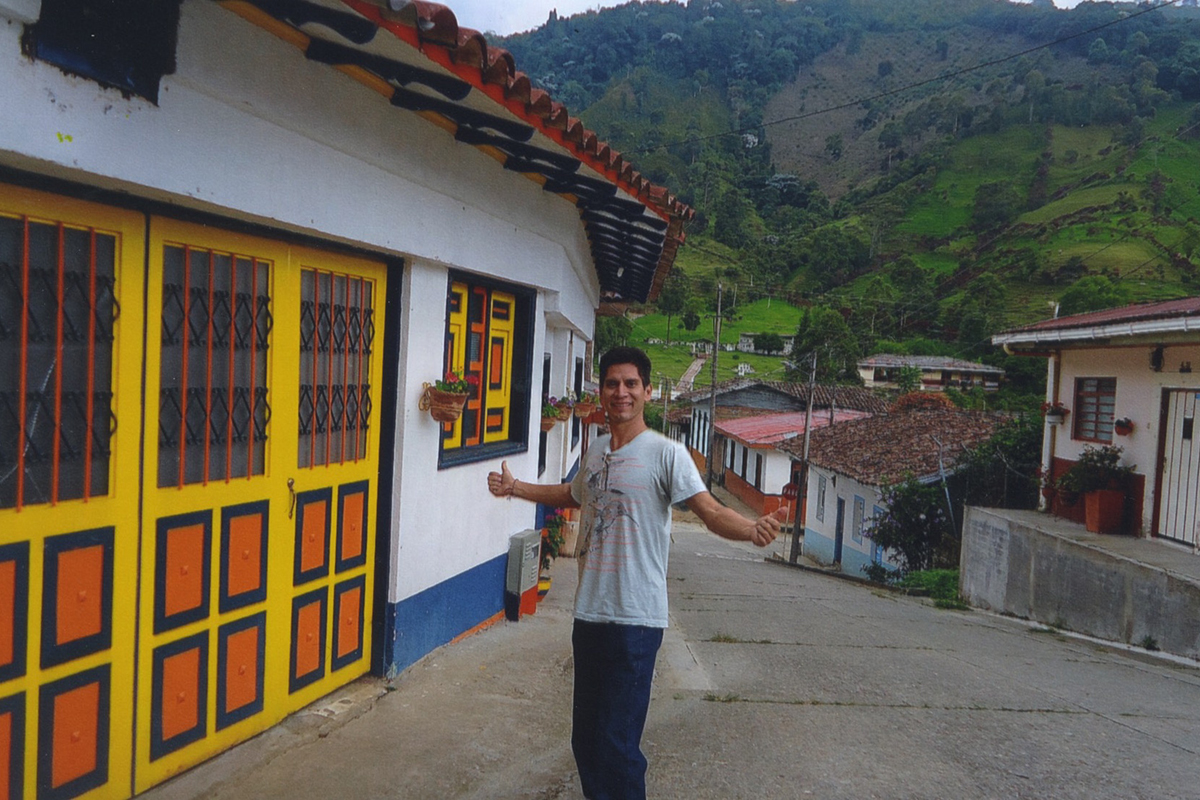Youth tours eight countries
These days more than ever, young people are traveling the world in several ways: by taking study-abroad programs at their schools, to teach English language classes in other countries, to work with philanthropic organizations or simply to get a look at the way others live outside the United States.
It was this latter category that led John Guzman Jr., son of Canyon Lake residents John and Catherine Guzman, to spend six months earlier this year in the countries of Belize, Guatemala, Honduras, El Salvador, Nicaragua, Costa Rica, Colombia and Ecuador.
As a San Diego volunteer tour guide for travelers staying at dormitory hostels, John has given speeches for San Diego’s Hostel International (HI) and “Travel 101” presentations at R.E.I. sporting goods stores. Particularly interested in travel and different cultures, John says, “This trip opened my mind to ways of life so different from the USA.” One of the differences he noticed was the pace of life.
When he first began his journey, he flew to Belize, the only official English-speaking country in Central America that also uses USA dollars. Off the mainland is Caye Caulker, a small island that measures just five miles north to south. John noticed that, with only 1,200 full-time residents, it had a “go slow” mentality.
“There were no traffic lights and no cars,” John observes. “All the golf carts on the island reminded me of Canyon Lake! Even the police drove around on golf carts.”
The island features many dive centers where one can learn to scuba dive or book tours for swimming with sharks or manatees. The price is one-third what one would pay in Hawaii. Also famous is the Great Blue Hole, a giant sinkhole a quarter of a mile across, located in the ocean off Belize. In 2012, the Discovery channel ranked the Great Blue Hole as No. 1 on the list of “10 most amazing places on earth.”
John says, “While some people dive (the Blue Hole), it’s not a dive for everyone. A prerequisite is logging more than 24 dives, as it’s over 400 feet deep. Some people choose instead to fly in a prop plane and admire it from above. Back on Caye Caulker, I would wind down under the stars as the locals grilled and sold fresh fish and I took in the aroma.”
John was able to stay in backpacker dorms that ranged in cost from $8 to $20 a night. Most were filled with travelers in their 20s and 30s, but there are no age restrictions. He says, “Often hostels I stayed in included activities, so you never felt alone, even if you traveled alone, as I did for six months. I enjoyed the community feel as some hostels shared a common kitchen area to cook. While staying at a hostel, it’s so easy to meet travelers from around the world.”
John notes that, in many of the Central American countries, the basic monthly salary is $250, so his low budget lasted longer than expected and he often spent less than $30 a day. “Once I found an unbelievable deal on Hostelworld.com (a booking site) and stayed five nights in a dorm hostel for five dollars! Yes, of course, it was just a promotional price – one dollar a night.”
While in Nicaragua, he spent three weeks on Ometepe, an island located in the middle of a giant freshwater lake. He says, “Ometepe was so tranquil – like a blast from the past USA of the 1950s. Things felt so simple. People would walk on dirt roads, little kids would play barefoot outside . . . From motor scooters to cars to horses, there were many ways of transport on this 19-mile long island.”
John paid $10 per night to stay at the home of a local – the Mora Gutierrez family. During a power outage one night, he got better acquainted with the family as they lit candles and hung out together in the living room, with John making use of his “broken Spanish” to communicate until the lights came back on.
Through that family and their daughter, Estefana, John met more local people, including a pharmacist named Ruth del Carmen Mairena Centeno. John says, “Our group was comprised of Ruth, Herty, Estefana, Dilana, Julio and Edwin. We usually went swimming in the huge lake that felt like an ocean. When I asked my friends if there were any sharks, they told me there were none. I later learned there were!”
He adds, “In my three weeks on the island, I learned to ride a motorbike from Herty, climbed a volcano, and even rode a horse on the beach. Sometimes, if not too busy, Ruth would simply close down her pharmacy and swim with us for an hour. One day after climbing a volcano (extinct Mt. Maderas) and feeling exhausted, the group surprised me with a homemade dinner at Ruth’s pharmacy. Almost daily, I told them about California and gave Ruth conversational classes to improve her English. They taught me about Ometepe and friendship.”
Alone, during his time on the Nicaragua mainland, John says he spent one night in the middle of a jungle, sleeping in a tree house. “I was 100 feet above the ground and surrounded by Howler monkeys. I actually am afraid of heights, but when you travel, you learn to stretch outside your comfort zone. Those monkeys woke me up at 3 a.m. and sounded so frightening!”
“Speaking of stretching outside your comfort zone, in Cotopaxi, Ecuador, I ate Cariucho de Cuy – guinea pig. It can be prepared deep fried or roasted over a flame. I thought it tasted like pork. My host was a university student named Alex Cevallos. He was busy that day but arranged for his family to show me around. They drove me around the whole day, but none of the women in his family would eat guinea pig – only Alex’s uncle joined me and together we ate this animal,” says John.
Alone in a restaurant in Ecuador, John tried chicken-foot soup and says he later learned it of its many health benefits, which include maintaining healthy skin and elasticity because of high amounts of collagen, and helping maintain healthy bones, nails and gums, as well as improving digestion – “like some kind of animal super food,” says John.
Through a travel group, John met a local Ecuadorian woman named Sol. During their first day together, she took him to see Ciudad Mitad del Mundo – “Middle of the World” – a museum park/monument that highlights the equator (from which the country takes it’s name.) “I put a foot in each hemisphere,” says John. Another day they went hiking and saw a giant waterfall.
John missed the April 16 7.8 Ecuadorian earthquake by just a week. In that disaster, 272 people died and 2,527 were injured. He did visit Sol a month later, however, and they enjoyed a romantic getaway.
Recently, Sol sent John an email from a military camp, telling him, “I am still working for the earthquake affected people. I like (to) help them. It’s a great satisfaction to see the happiness in others again after their homes were destroyed.”
In addition to his interesting and romantic adventures, John say he experienced a few mis-adventures. These included having an insect burrow under his skin, falling off the back of a motorbike and getting to ride in the backseat of a Colombia police car (a kind gesture to get him back to his hotel).
“I can’t wait to return to Central America,” he says. “Maybe the next time, I’ll encounter more USA citizens who will escape there after the 2016 election.”
Previous Article
City Connection





 April 19, 2024
April 19, 2024